The Intraseasonal and Interannual Variability of Arctic Temperature and Specific Humidity Inversions
Abstract
1. Introduction
2. Data and Methods
2.1. SHEBA Data
2.2. ERA-Interim Reanalysis Dataset
2.3. Methods
3. Results
3.1. Profiles of Temperature and Specific Humidity
3.2. Mechanisms
3.3. The Spatio-Temporal Variability
4. Discussion and Conclusions
Author Contributions
Funding
Conflicts of Interest
References
- Tjernström, M.; Graverson, R.G. The vertical structure of the lower Arctic troposphere analyzed from observations and the ERA-40 reanalysis. Q. J. R. Meteorol. Soc. 2009, 135, 431–443. [Google Scholar] [CrossRef]
- Serreze, M.; Barrett, A.P.; Stroeve, J.C.; Kindig, D.N.; Holland, M.M. The emergence of suface-based Arctic amplification. Cryosphere 2009, 3, 11–19. [Google Scholar] [CrossRef]
- Bintanja, R.; Graversen, R.G.; Hazeleger, W. Arctic winter warming amplified by the thermal inversion and consequent low infrared cooling to space. Nat. Geosci. 2011, 4, 758–761. [Google Scholar] [CrossRef]
- Serreze, M.; Barry, R.G. Cambridge Atmopsheric and Space Science Series; The Arctic Climate System; Cambridge University Press: Cambridge, UK, 2014; p. 442. [Google Scholar]
- Barrie, L.A.; Bottenheim, J.W.; Schnell, R.C.; Crutzen, R.C.; Rasmussen, R.A. Ozone destruction and photochemical reactions at polar sunrise in the lower Arctic atmosphere. Nature 1988, 334, 1875–1883. [Google Scholar] [CrossRef]
- Oltmans, S.J.; Schnell, R.C.; Sheridan, P.J.; Peterson, R.E.; Li, S.M.; Winchester, J.W.; Tans, P.P.; Sturges, W.T.; Kahl, J.D.; Barrie, L.A. Seasonal surface ozone and filterable bromine relationship in the high Arctic. Atmos. Environ. 1989, 23, 2431–2441. [Google Scholar] [CrossRef]
- Bridgman, H.A.; Schnell, R.C.; Kahl, J.D.; Herbert, G.A.; Joranger, E. A major haze event near Point Barrow, Alaska: analysis of probable source regions and transport pathways. Atmos. Environ. 1989, 23, 2537–2549. [Google Scholar] [CrossRef]
- Schweiger, A.J.; Lindsay, R.W.; Varvus, S.; Francis, J.A. Relationships between Arctic sea ice and clouds during autumn. J. Climate 2008, 21, 4799–4810. [Google Scholar] [CrossRef]
- Sedlar, J.; Tjernström, M. Stratiform cloud-inversion characterization during the Arctic melt season. Boundary Layer Meteorol. 2009, 132, 455–474. [Google Scholar] [CrossRef]
- Morrison, H.; de Boer, G.; Feingold, G.; Harrington, J.; Shupe, M.D.; Sulia, K. Resilience of persistent Arctic mixed-phase clouds. Nat. Geosci. 2012, 5, 11–17. [Google Scholar] [CrossRef]
- Qiu, S.; Dong, X.; Xi, B.; Li, J.-L.F. Characterizing Arctic mixed-phase cloud structure and its relationship with humidity and temperature inversion using NSA observations. J. Geophys. Res. Atmos. 2015, 120, 7737–7746. [Google Scholar] [CrossRef]
- Przybylak, R. The Climate of the Arctic; Springer International Publishing: Cham, Switzerland, 2016; p. 287. [Google Scholar]
- Stramler, K.; Genio, A.D.D.; Rossow, W.B. Synoptically driven Arctic winter states. J. Climate 2011, 24, 1747–1762. [Google Scholar] [CrossRef]
- Zaitseva, N.A.; Skony, S.M.; Kahl, J.D. Temperature inversions over the western Arctic from radiosonde data. Russ. Meteorol. Hydrol. 1996, 6, 6–17. [Google Scholar]
- Bourne, S.M.; Bhatt, U.S.; Zhang, J.; Thoman, R. Surface based temperature inversions in Alaska from a climate perspective. Atmos. Res. 2010, 95, 353–366. [Google Scholar] [CrossRef]
- Uttal, T.; Curry, J.A.; Mcphee, M.G.; Perovich, D.K.; Moritz, R.E.; Maslanik, J.A.; Guest, P.S.; Stern, H.L.; Moore, J.A.; Turenne, R.; et al. Surface heat budget of the Arctic Ocean. Bull. Am. Meteorol. Soc. 2002, 83, 255–275. [Google Scholar] [CrossRef]
- Wetzel, C.; Brümmer, B. An Arctic inversion climatology based on the European Centre Reanalysis ERA-40. Meteorologische Zeitschrift 2011, 20, 589–600. [Google Scholar] [CrossRef]
- Liu, Y.; Key, J.R. Detection and analysis of clear sky, low-level atmospheric temperature inversions with MODIS. J. Atmos. Ocean Technol. 2003, 20, 1727–1737. [Google Scholar] [CrossRef]
- Liu, Y.; Key, J.R.; Schweiger, A.; Francis, J. Characteristics of satellite-derived clear-sky atmospheric temperature inversion strength in the Arctic, 1980–96. J. Climate 2006, 19, 4902–4913. [Google Scholar] [CrossRef]
- Devasthale, A.; Willén, U.; Karlsson, K.-G.; Jones, C.G. Quantifying the clear-sky temperature inversion frequency and strength over the Arctic Ocean during summer and winter seasons from AIRS profiles. Atmos. Chem. Phys. 2010, 10, 2835–2858. [Google Scholar] [CrossRef]
- Pavelsky, T.M.; Boé, J.; Hall, A.; Fetzer, E.J. Atmospheric inversion strength over polar oceans in winter regulated by sea ice. Clim. Dyn. 2011, 36, 945–955. [Google Scholar] [CrossRef]
- Change, L.; Song, S.; Feng, G.; Zhang, Y.; Gao, G. Assessment of the uncertainties in Arctic low-level temperature inversion characteristics in Radio Occultation observations. IEEE Trans. Geosci. Remote Sens. 2017, 55. [Google Scholar] [CrossRef]
- Solomon, A.; Shupe, M.D.; Person, P.O.G.; Morrison, H. Moisture and dynamical interactions maintaining decoupled Arctic mixed-phase stratocumulus in the presence of a humidity inversion. Atmos. Chem. Phys. 2011, 11, 10127–10148. [Google Scholar] [CrossRef]
- Tjernström, M.; Birch, C.E.; Brooks, I.M.; Shupe, M.D.; Persson, P.O.G.; Sedlar, J.; Mauritsen, T.; Leck, C.; Paatero, J.; Szczodrak, M.; et al. Meteorological conditions in the central Arctic summer during the Arctic summer cloud ocean study (ASCOS). Atmos. Chem. Phys. 2012, 12, 6863–6889. [Google Scholar] [CrossRef]
- Treffeisen, R.; Krejci, R.; Ström, J.; Engvall, A.C.; Herber, A.; Thomason, L. Humidity observations in the Arctic troposphere over Ny-Ålesund, Svalbard based on 15 years of radiosonde data. Atmos. Chem. Phys. 2007, 7, 2721–2732. [Google Scholar] [CrossRef]
- Vihma, T.; Kilpeläinen, T.; Manninen, M.; Sjöblom, A.; Jakobson, E.; Palo, T.; Jaagus, J.; Maturilli, M. Characteristics of temperature and humidity inversions and low-level jets over Svalbard fjords in spring. Adv. Meteorol. 2011, 486807. [Google Scholar] [CrossRef]
- Devasthale, A.; Sedlar, J.; Tjernström, M. Characteristics of water-vapour inversions observed over the Arctic by Atmospheric Infrared Sounder (AIRS) and radiosondes. Atmos. Chem. Phys. 2011, 11, 9813–9823. [Google Scholar] [CrossRef]
- Nygård, T.; Valkonen, T.; Vihma, T. Characteristics of Arctic low-tropospheric humidity inversions based on radiao soundings. Atmos. Chem. Phys. 2013, 14, 1959–1971. [Google Scholar] [CrossRef]
- Brunke, M.A.; Stegall, S.T.; Zeng, X. A climatology of tropospheric humidity inversions in five reanalyses. Atmos. Res. 2015, 153, 165–187. [Google Scholar] [CrossRef]
- Vömel, H.; Selkirk, H.; Miloshevich, L.; Valverde-Canossa, J.; Valdés, J.; Kyrö, E.; Kivi, R.; Stolz, W.; Peng, G.; Diaz, J.A. Radiation dry bias of the Vaisala RS92 humidity sensor. J. Atmos. Oceanic Technol. 2007, 24, 953–963. [Google Scholar] [CrossRef]
- The Surface Heat Balance of the Arctic (SHEBA). Available online: https://www.eol.ucar.edu/projects/sheba/ (accessed on 1 April 2019).
- Dee, D.P.; Uppala, S.M.; Simmons, A.J.; Berrisford, P.; Poli, P.; Kobayashi, S.; Andrae, U.; Balmaseda, M.A.; Balsamo, G.; Bauer, P.; et al. The ERA-Interim reanalysis: configuration and performance of the data assimilation system. Q. J. R. Meteorol. Soc. 2011, 137, 553–597. [Google Scholar] [CrossRef]
- Uppala, S.; Kallberg, P.; Simmons, A.J.; Andrae, U.; Bechtold, V.D.C.; Fiorino, M.; Gibson, J.K.; Haseler, J.; Hernandez, A.; Kelly, G.A.; et al. The ERA-40 reanalysis. Q. J. R. Meteorol. Soc. 2005, 131, 2961–3012. [Google Scholar] [CrossRef]
- Screen, J.S.; Simmonds, I. Erroneous Arctic temperature trends in the ERA-40 reanalysis: A closer look. J. Climate 2011, 24, 2620–2627. [Google Scholar] [CrossRef]
- Jakobson, E.; Vihma, T.; Palo, T.; Jakobson, L.; Keernik, H.; Jaagus, J. Validation of atmospheric reanalyses over the central Arctic Ocean. Geophys. Res. Lett. 2012, 39. [Google Scholar] [CrossRef]
- Kohonen, T. Self-Organizing Maps; Springer: New York, NY, USA, 2001; p. 501. [Google Scholar]
- Hewitson, B.C.; Crane, R.G. Self-organizing maps: Applications to synoptic climatology. Climate Res. 2002, 22, 13–26. [Google Scholar] [CrossRef]
- Johnson, N.C.; Feldstein, S.B.; Tremblay, B. The continuum of Northern Hemisphere teleconnection patterns and a description of the NAO shift with the use of self-organizing maps. J. Climate 2008, 21, 6354–6371. [Google Scholar] [CrossRef]
- Johnson, N.C.; Feldstein, S.B. The continuum of North Pacific sea level pressure patterns: Intraseaosnal, interannual, and interdecadal variability. J. Climate 2010, 23, 851–867. [Google Scholar] [CrossRef]
- Lee, S.; Feldstein, S.B. Detecting ozone-and greenhouse gas-driven wind trends with observational data. Science 2013, 339, 563–567. [Google Scholar] [CrossRef] [PubMed]
- Horton, D.E.; Johnson, N.C.; Singh, D.; Swain, D.L.; Rajaratnam, B.; Diffenbaugh, N.S. Contribution of changes in atmospheric circulation patterns to extreme temperature trends. Nature 2015, 522, 465–471. [Google Scholar] [CrossRef] [PubMed]
- Thompson, D.; Wallace, J. The Arctic Oscillation signature in the wintertime geopotential height and temperature fields. Geophys. Res. Lett. 1998, 25, 1297–1300. [Google Scholar] [CrossRef]
- Wu, B.; Wang, J.; Walsh, J.E. Dipole Anomaly in the Winter Arctic Atmosphere and Its Association with Sea Ice Motion. J. Climate 2006, 19, 210–225. [Google Scholar] [CrossRef]
- Yoo, C.; Feldstein, S.; Lee, S. The prominence of a tropical convective signal in the wintertime Arctic temperature. Atmos. Sci. Let. 2013, 15, 7–12. [Google Scholar] [CrossRef]
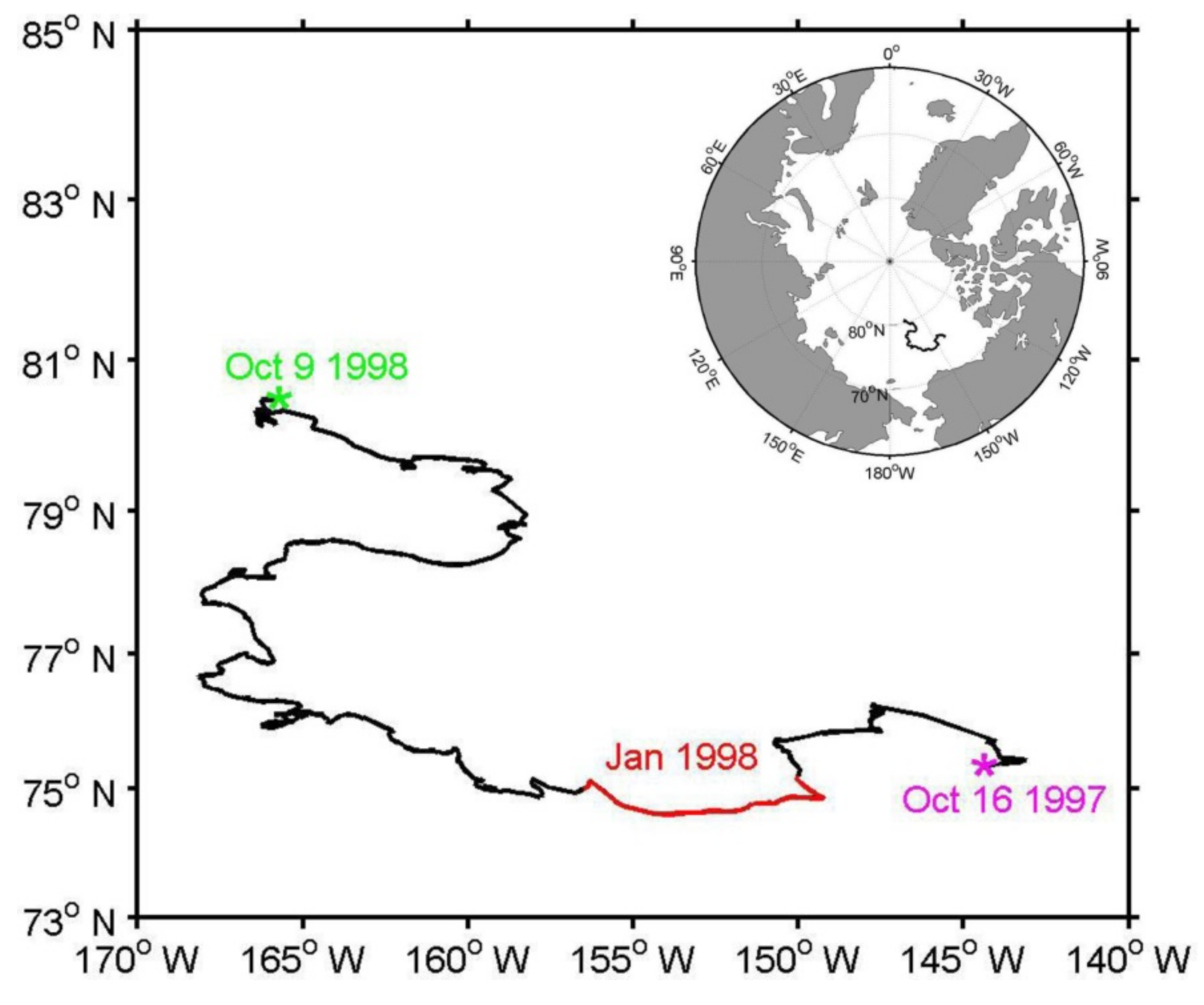
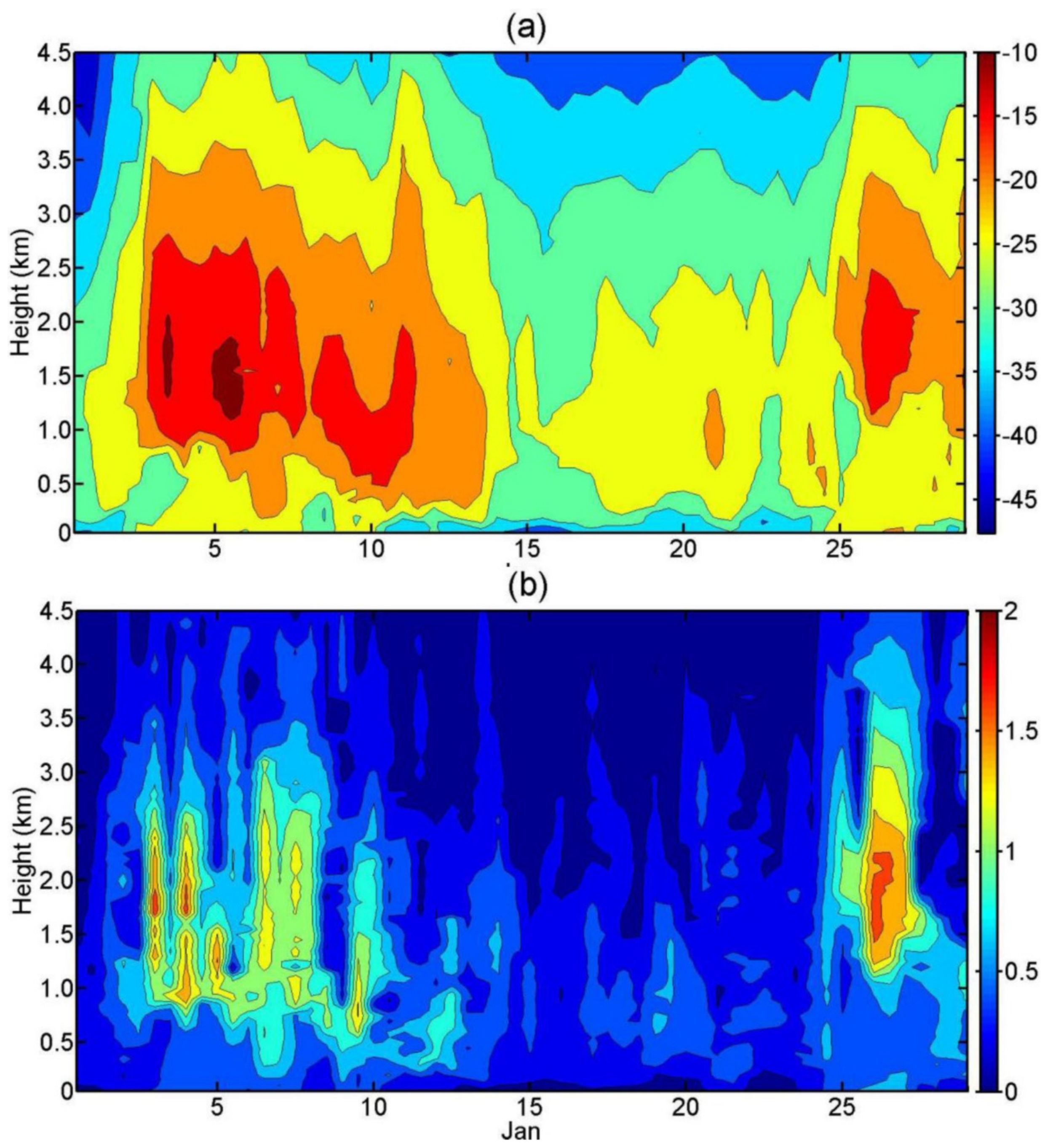
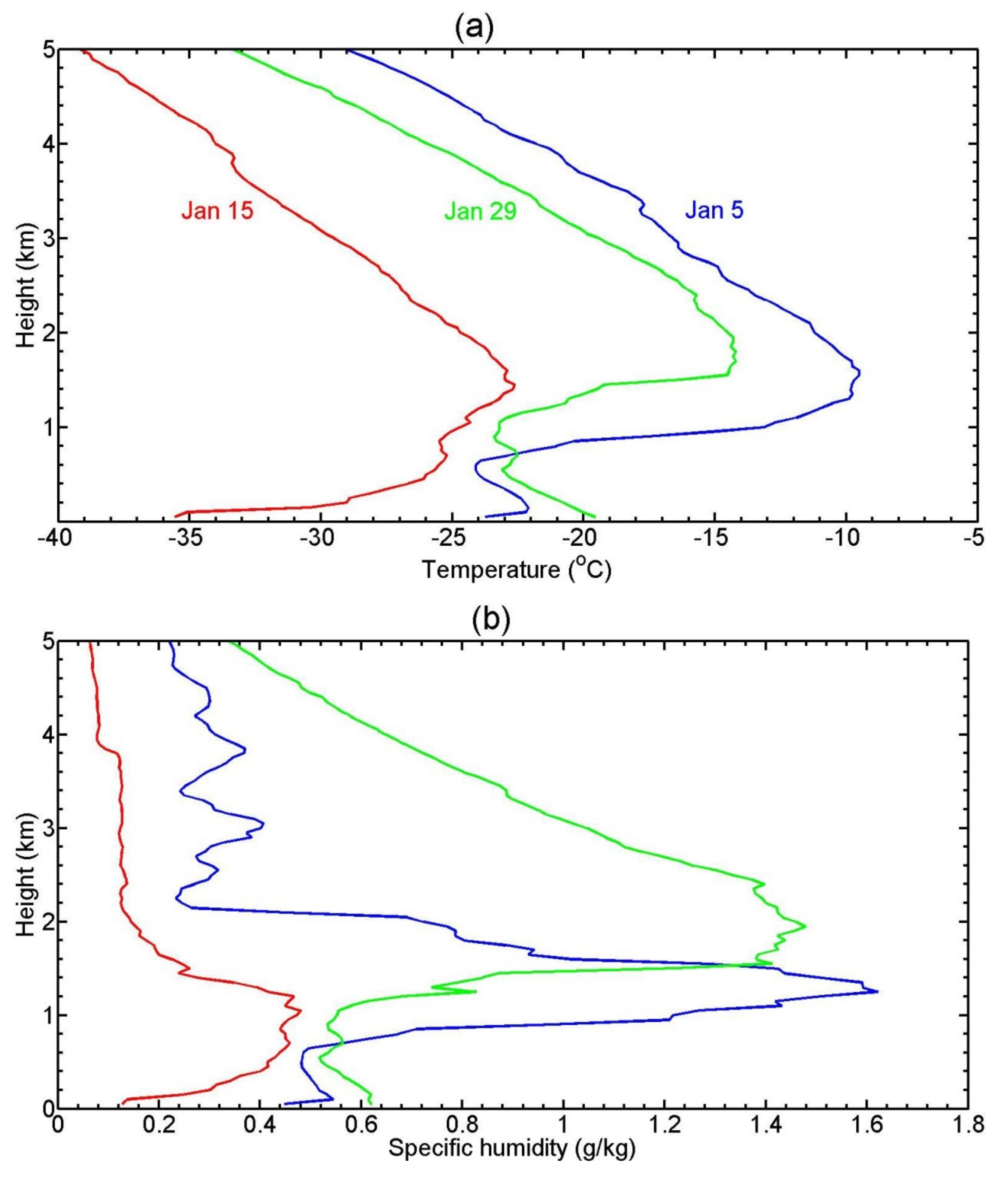
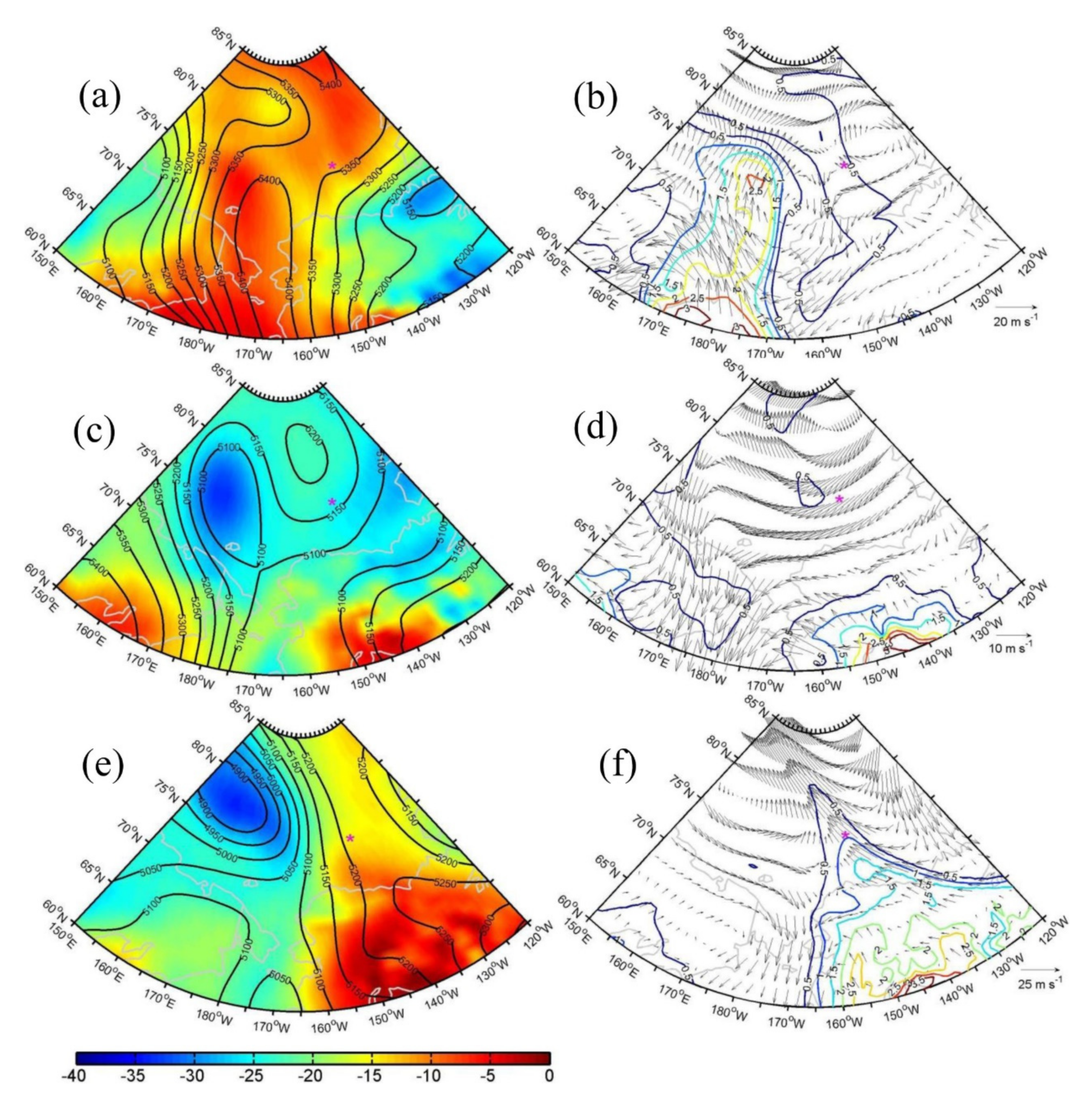
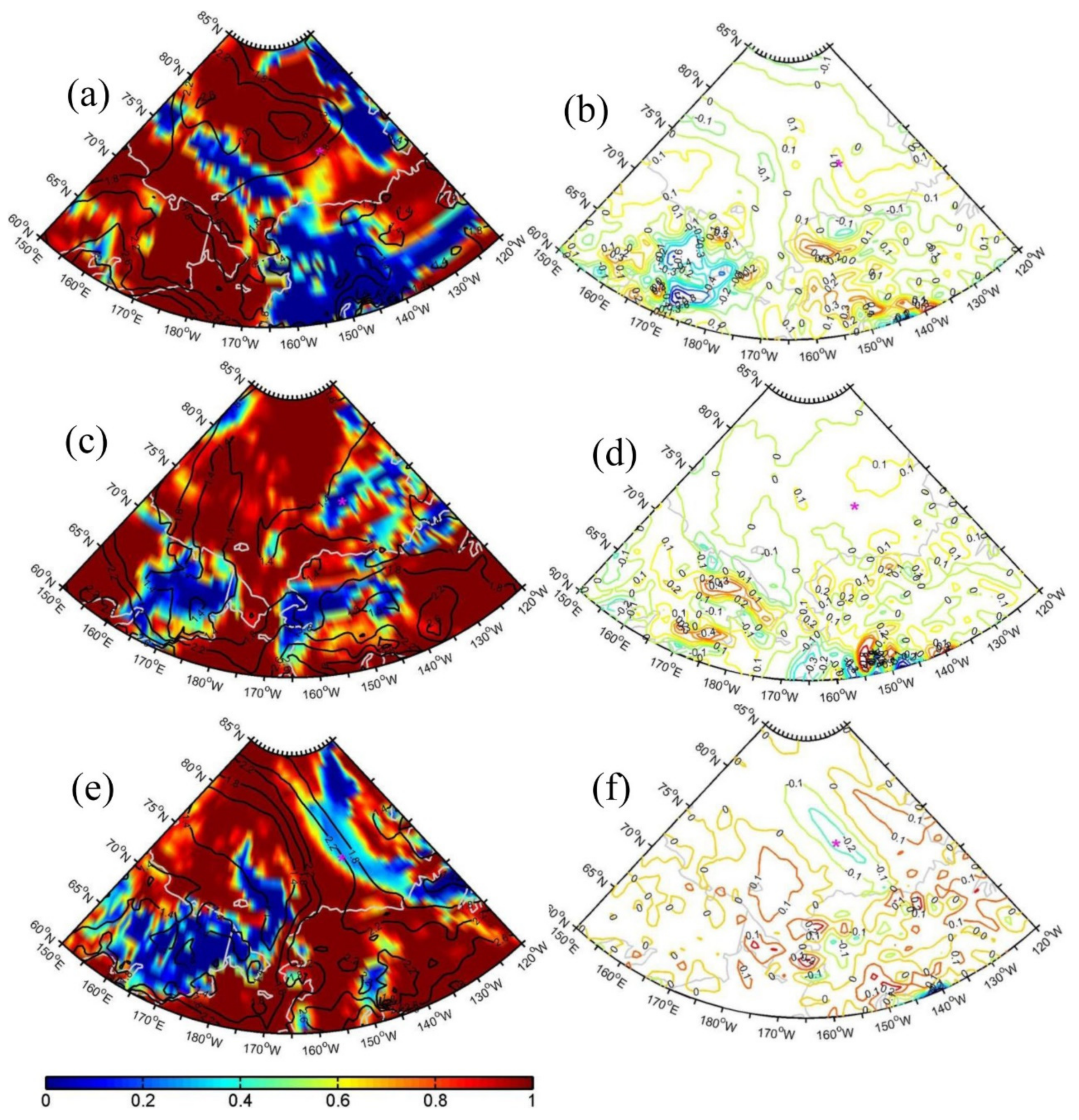
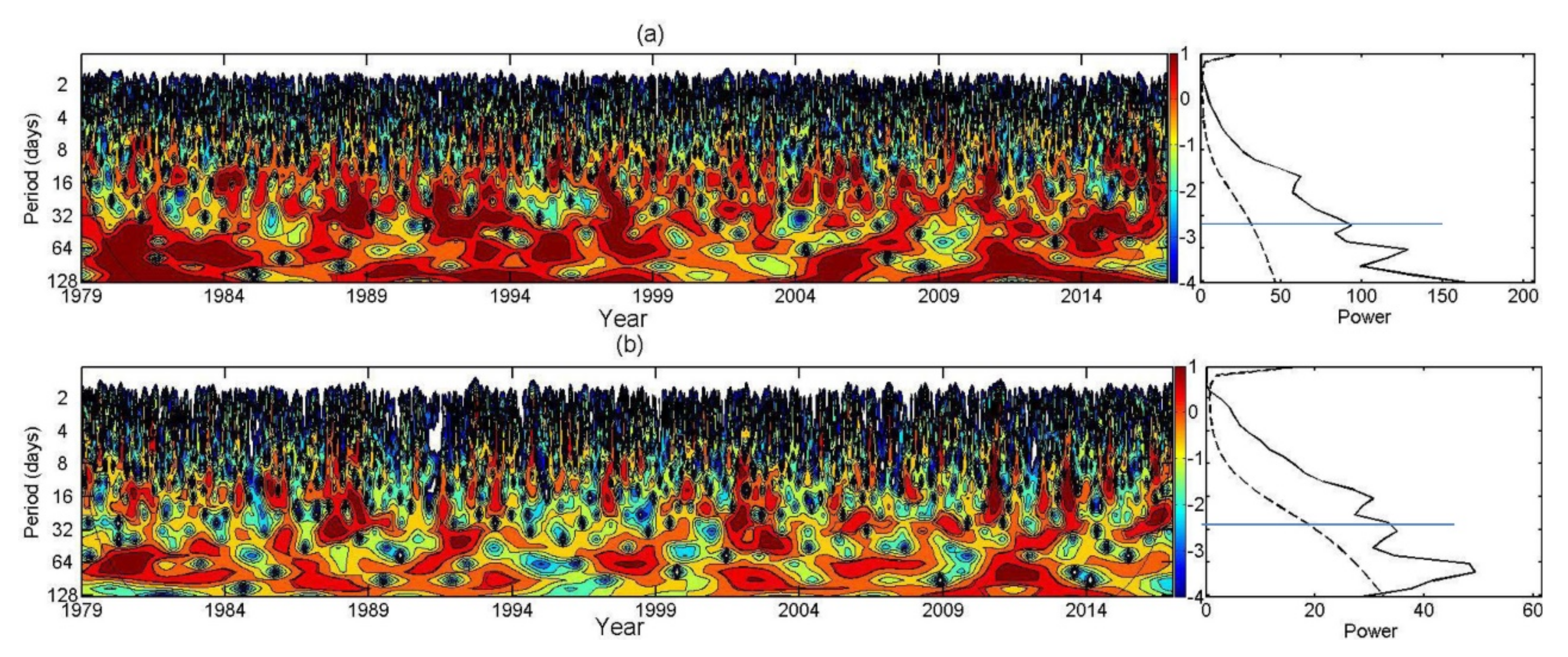
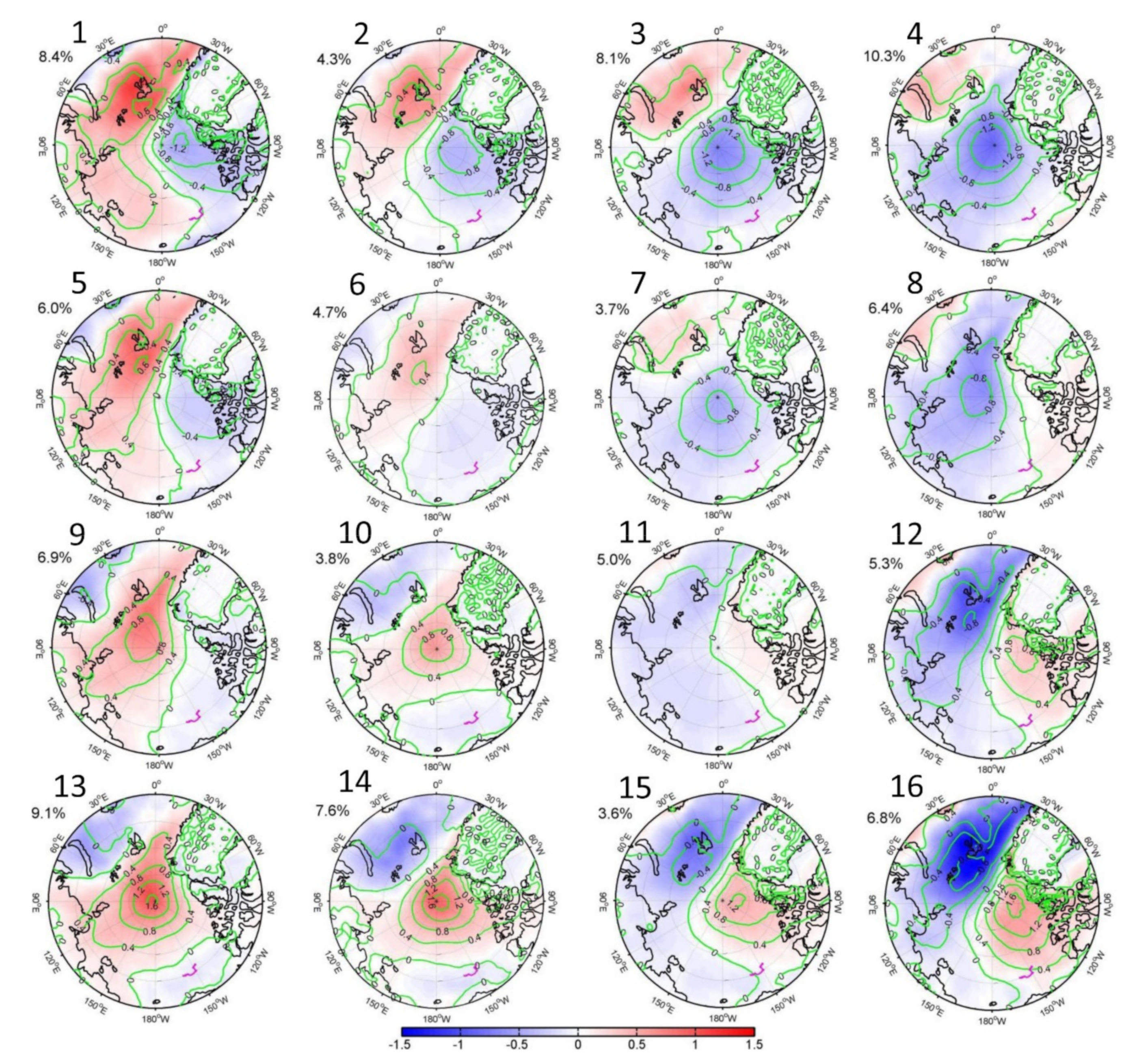
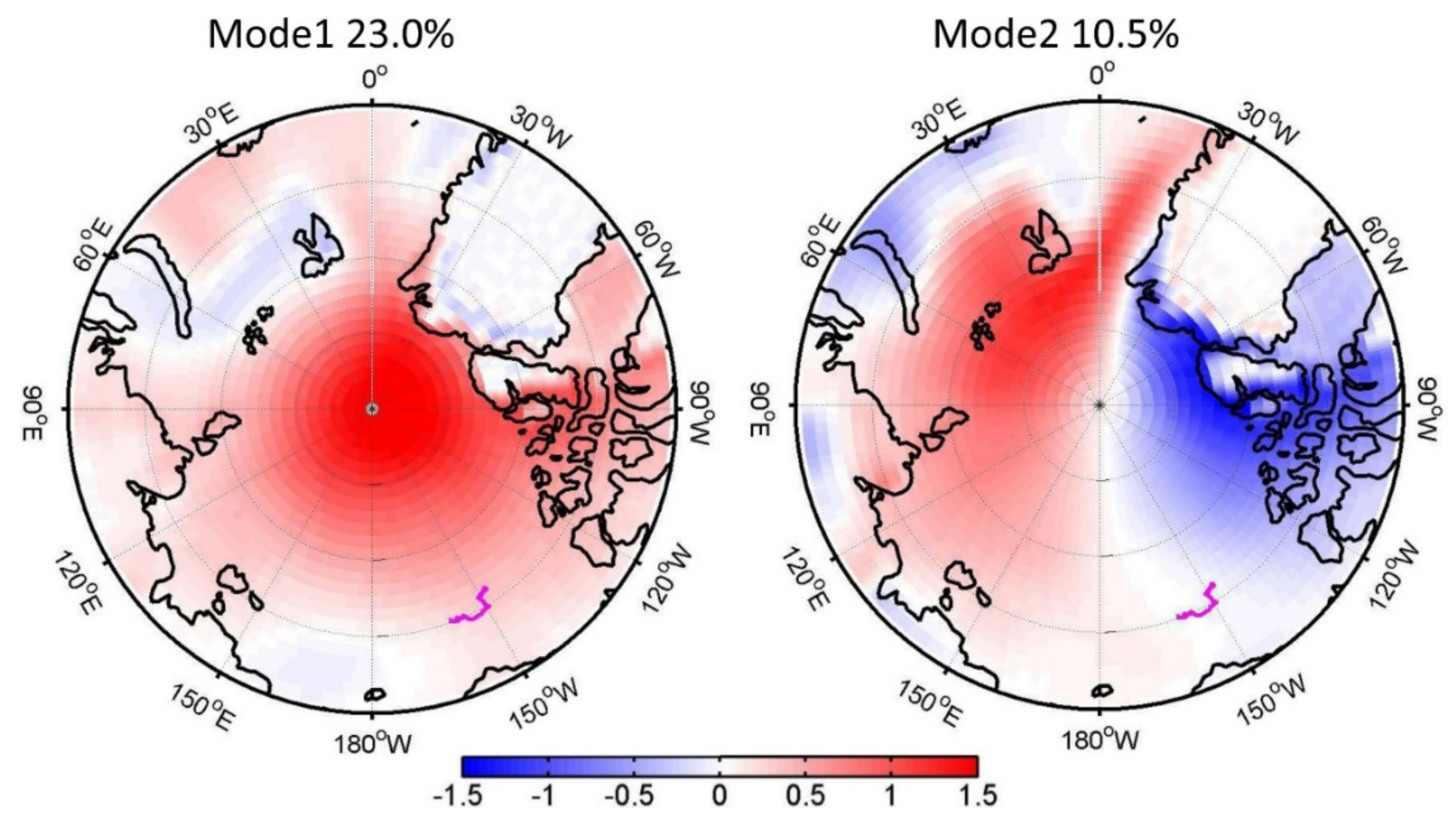
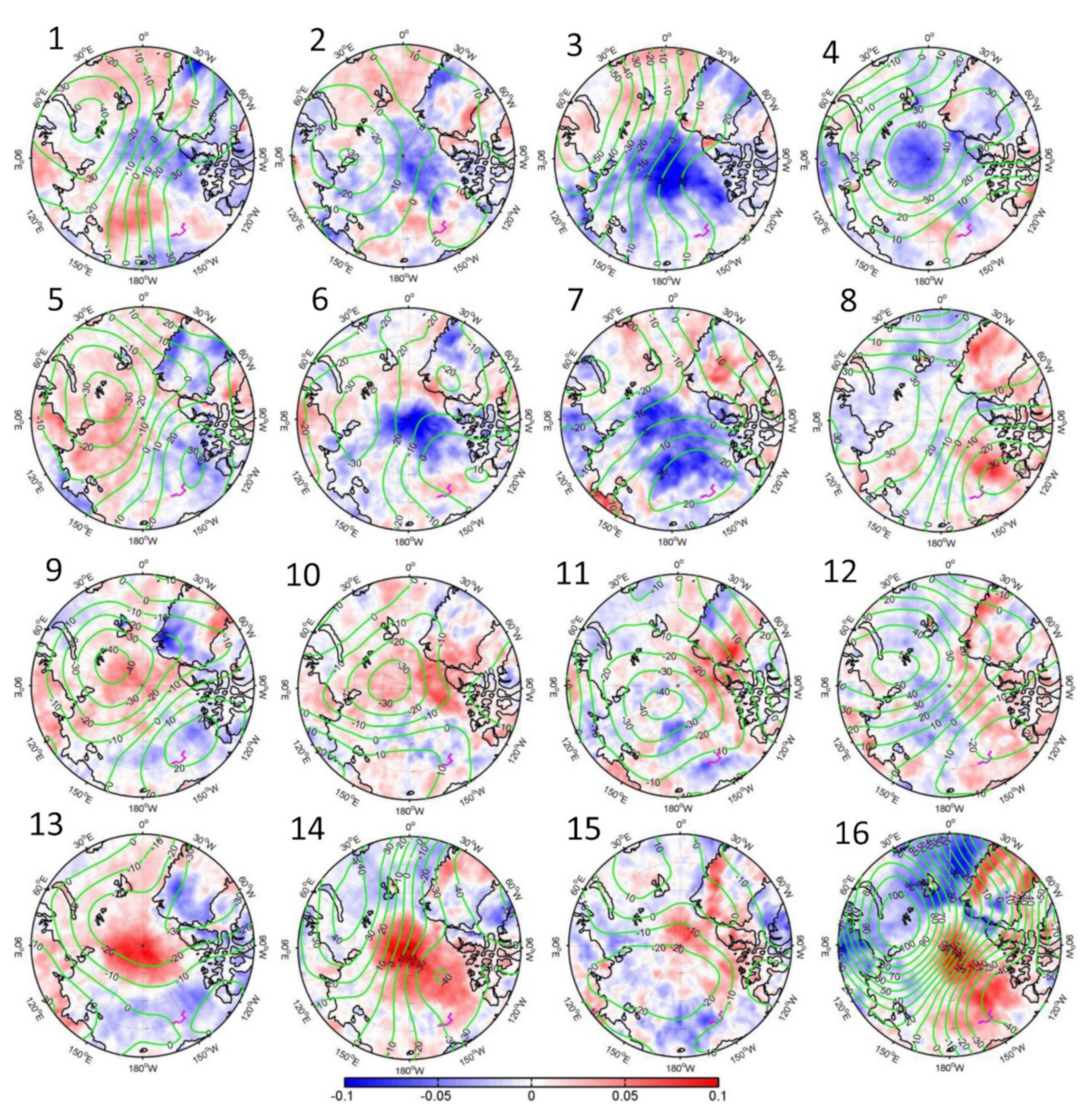
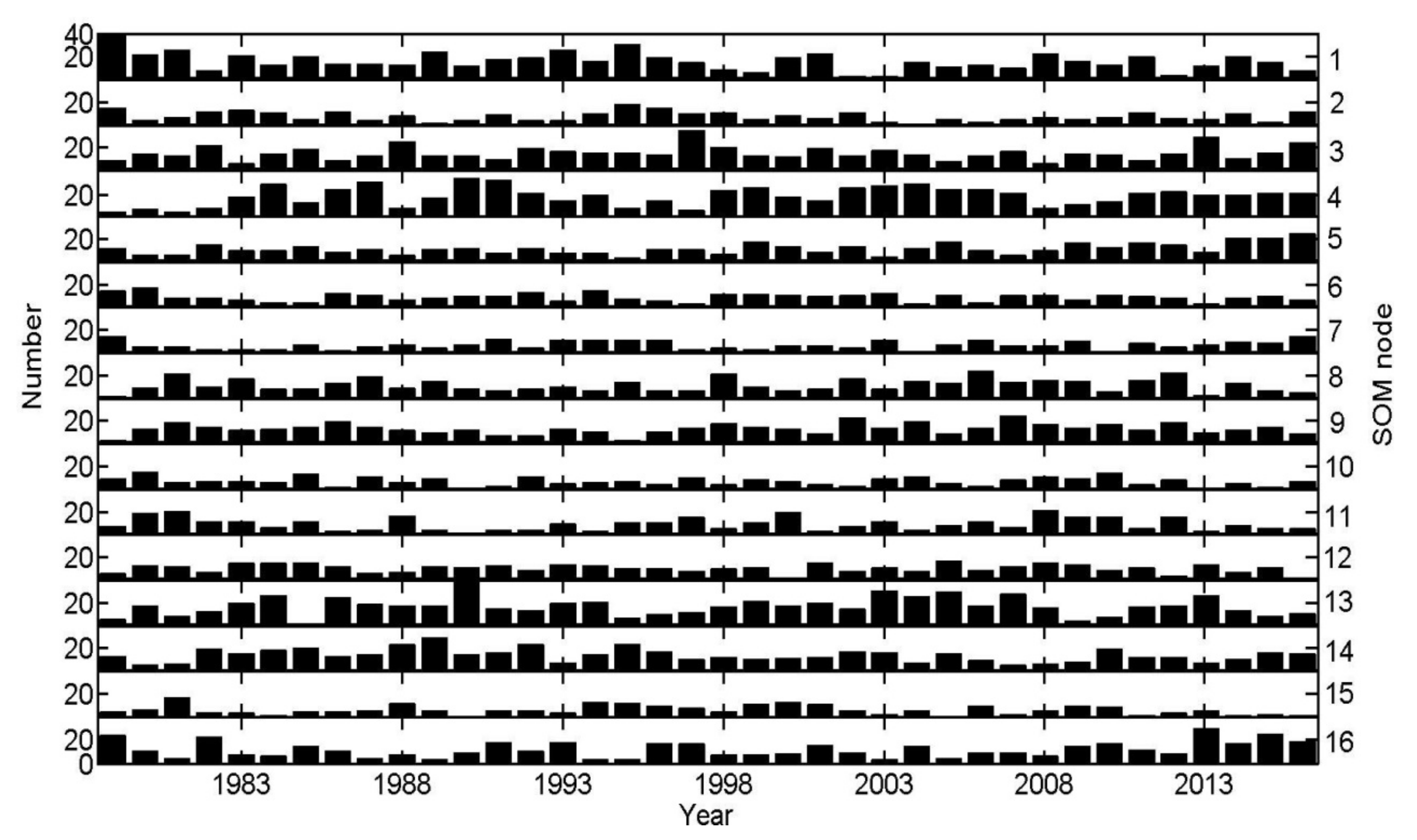
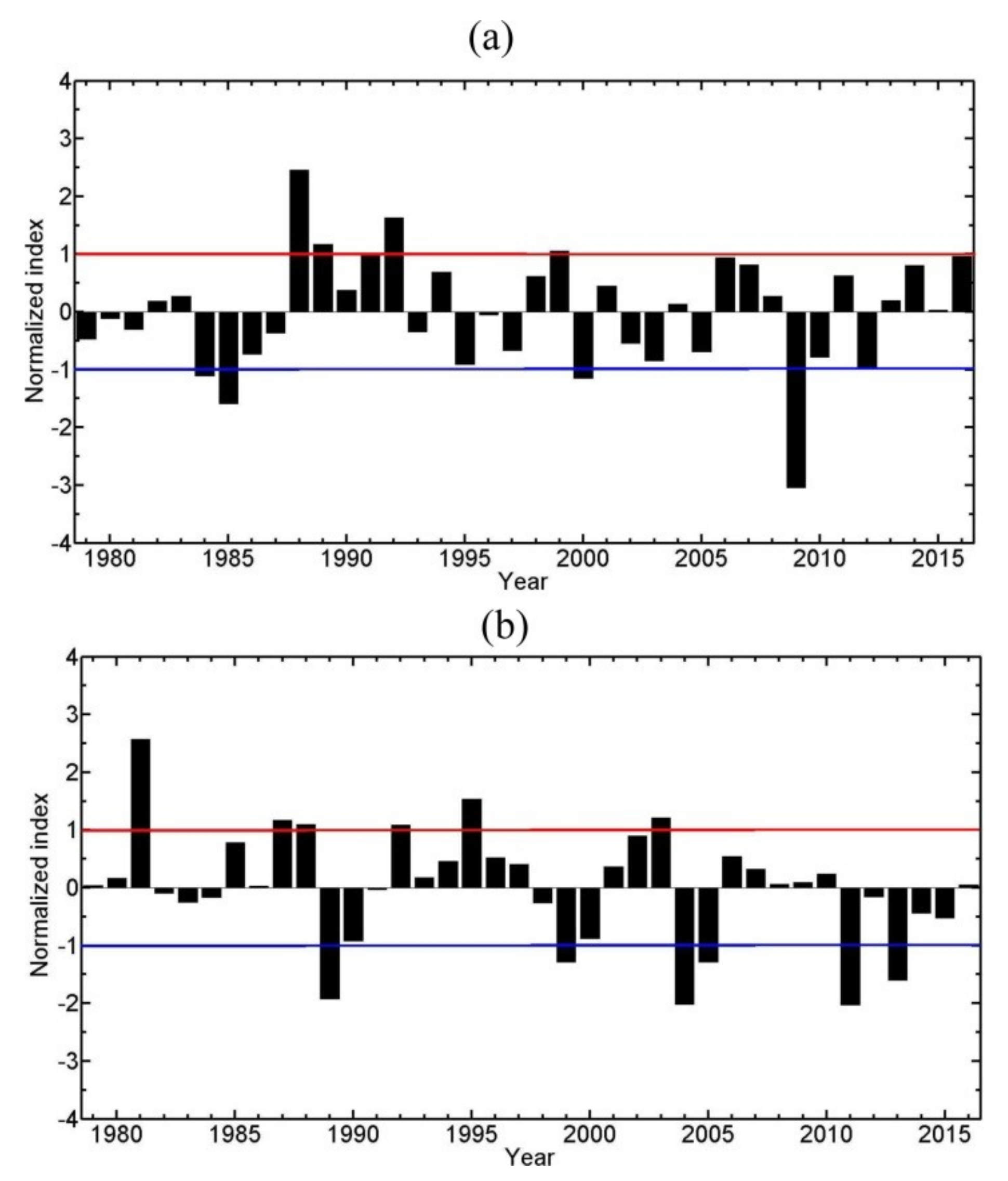
© 2019 by the authors. Licensee MDPI, Basel, Switzerland. This article is an open access article distributed under the terms and conditions of the Creative Commons Attribution (CC BY) license (http://creativecommons.org/licenses/by/4.0/).
Share and Cite
Yu, L.; Yang, Q.; Zhou, M.; Zeng, X.; Lenschow, D.H.; Wang, X.; Han, B. The Intraseasonal and Interannual Variability of Arctic Temperature and Specific Humidity Inversions. Atmosphere 2019, 10, 214. https://doi.org/10.3390/atmos10040214
Yu L, Yang Q, Zhou M, Zeng X, Lenschow DH, Wang X, Han B. The Intraseasonal and Interannual Variability of Arctic Temperature and Specific Humidity Inversions. Atmosphere. 2019; 10(4):214. https://doi.org/10.3390/atmos10040214
Chicago/Turabian StyleYu, Lejiang, Qinghua Yang, Mingyu Zhou, Xubin Zeng, Donald H. Lenschow, Xianqiao Wang, and Bo Han. 2019. "The Intraseasonal and Interannual Variability of Arctic Temperature and Specific Humidity Inversions" Atmosphere 10, no. 4: 214. https://doi.org/10.3390/atmos10040214
APA StyleYu, L., Yang, Q., Zhou, M., Zeng, X., Lenschow, D. H., Wang, X., & Han, B. (2019). The Intraseasonal and Interannual Variability of Arctic Temperature and Specific Humidity Inversions. Atmosphere, 10(4), 214. https://doi.org/10.3390/atmos10040214





